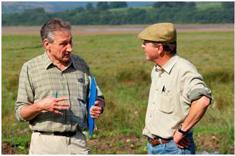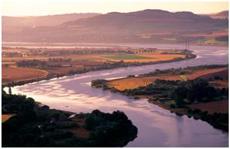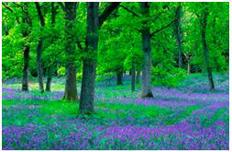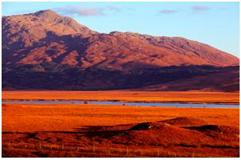In our second blog of the series about our partners, we hear from NatureScot about why they are excited about being part of the Scotland's environment web collaboration.
NatureScot
November 08, 2017
Exciting times - reflections from NatureScot
Scotland’s environment website, the award winning environment portal for Scotland, has come of age. With its updated new look and expanding content, the use and utility of the website continue to grow. And it continues to attract interest beyond our borders.
"We are delighted to remain part of the web partnership, which has accomplished so much and grown in ambition. Looking to the future we see even greater potential, such as through integrated analysis for understanding the resilience of our biodiversity in Scotland".
Sally Thomas, Director of Policy and Advice
 |
|
For a public sector body such as NatureScot, Scotland's environment website provides functional access to definitive data. Land Information Search (LIS) is an early example of shared access to information required for decision making, enabling us all to work better, quicker and more collaboratively.
"We look forward to taking part in the LIS update in 2018. It provides a further opportunity to support implementation of Scottish Planning Policy."
Peter Hutchinson, Planning & Renewables Unit Manager
|
We publish spatial data through our own website to Scotland’s Spatial Data Infrastructure. Scotland's environment website then enables it to be viewed graphically, such as for protected areas in Scotland. That has also shown us where we can make improvements, for example in characterising ecosystem health at the river sub-basin catchment scale.
"In addition to publishing our species data to Scotland's environment website through the National Biodiversity Network portal (NBN Atlas Scotland), we have secured and published around 770 habitat surveys. For data publishers, Scotland's environment website provides both visibility and added value. Data on Scotland's environment website is easy to discover, easy to use, and it sits next to valuable contextual information."
Lachlan Renwick, ISS GIS Services Manager
|
Sub-basin catchments were chosen as a logical biogeographical sub-division for characterising ecosystem health. By dividing Scotland into 10 parts they are an aid to integrated planning and collaborative working at the regional or landscape scale. Happily, we didn’t have to invent them. They are the management areas for safeguarding water condition in Scotland, a globally renowned natural asset providing us with a host of vital ecosystem services, and integral to ecosystem health.
|
|
 |
"Scotland’s environment website has enabled a range of partners to bring together the disparate components of ecosystem condition, function and resilience. This is a biodiversity 2020 commitment, which can be developed more fully and improved upon into the future."
David O’Brien, Evidence and Reporting Manager
At the Royal Society of Edinburgh ‘Spotlight on Biodiversity’ conference on 10 October 2017 we announced a completion milestone in the production of a new standardised habitat map of Scotland. It now incorporates best available mapped elements from a range of sources across Scotland under a standardised habitat classification - the European Nature Information System (EUNIS). The hierarchical EUNIS classification is easy to understand and provides consistency with the mapping of our surrounding seas. As a new addition to Scotland's environment website, the Habitat Map of Scotland (HabMoS) can be updated dynamically as new survey is undertaken.
 |
|
"Having a standardised habitat map of Scotland fosters efficiency and collaboration – not only within Scotland but throughout Europe and beyond. We have developed a remote sensing technique to improve mapping resolution in the uplands. In the future we’d also like to see the incorporation of new elements, such as crop mapping in the lowlands."
Des Thompson, Principal Adviser on Science & Biodiversity
|
We are actively looking into the utilisation of outputs from the European ‘Sentinel’ constellation of satellites, which may soon enable within-season assessment of habitat condition, productivity, stress and damage from the local site to Scotland-wide scales.
|
"In the year ahead we are keen to make even fuller use of Scotland’s environment website, for example in:
a) enhanced use of trends and indicators through standardised open data publishing so that results can be re-configured and linked within the Scotland's environment website environment;
b) adding value to biodiversity assessment – notably through a better understanding of environmental pressures on nature and landscape;
c) exploring the concept of a national ecosystem network, expressed at appropriate spatial scales."
Ed Mackey, Knowledge and Information Unit Manager
|
 |
Adobe Acrobat Reader is the free, trusted leader for reliably viewing, annotating and signing PDFs.
Download Adobe Acrobat Reader




